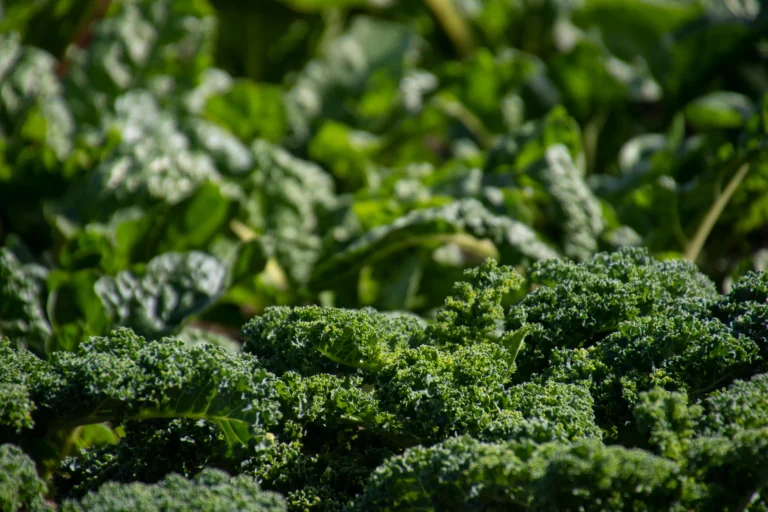Just a smart setup that works in a small space. This is how to grow broccoli in containers—practical, forgiving, and surprisingly productive when you follow a simple plan.
What You’ll Achieve (and Why Containers Help)
Container gardening gives you total control over soil, moisture, light, and timing. That control is everything for broccoli, a cool-season crop that loves steady moisture, rich nutrition, and 6–8 hours of sun without punishing heat. In this guide you’ll learn:
-
The right pot sizes, materials, and drainage tricks.
-
Two proven soil mix recipes that hold moisture but drain fast.
-
A zero-stress watering & feeding schedule tailored to containers.
-
Clean IPM tactics (row cover, Bt, soaps) for the usual brassica pests.
-
Clear harvest cues, storage, and how to keep side shoots coming.
You’ll see the phrase how to grow broccoli in containers in key sections so you can scan quickly and search engines can match you to the answers you need.
Choose Container-Friendly Varieties
Compact heading types (tight central crowns)
-
‘De Cicco’ — forgiving, early, tons of side shoots.
-
‘Green Magic’ — uniform heads, handles a bit of heat.
-
‘Belstar’ (F1) — reliable domes in variable weather.
-
‘Blue Wind’ — very early; great spring/fall pick.
Sprouting & raab styles (cut-and-come-again)
-
‘Apollo’ and purple sprouting types for waves of tender shoots in cool weather.
What to check on seed packets: days to maturity (55–80 from transplant), plant height (under ~30 in / 75 cm), side-shoot tendency, and heat tolerance.
Containers & Drainage (Size Really Matters)
Minimum volumes and why they work
-
5–7 gal (19–26 L) per plant = baseline for steady moisture.
-
10–12 gal (38–45 L) if summers run hot or windy (fewer watering chores).
-
Fabric pots breathe (no circling roots). SIP (self-watering planters) even out moisture in heat.
Pot & spacing cheat sheet
| Container Type | Volume | Plants/Container | Why Choose It |
|---|---|---|---|
| Rigid nursery pot | 5 gal | 1 | Cheap, easy to source; drill extra side holes for airflow |
| Fabric pot | 7 gal | 1 | Best oxygen/drainage; prevents root circling |
| SIP (self-watering) | 10–12 gal | 1–2 | Built-in reservoir stabilizes moisture in hot spells |
Drainage pro tip: Elevate pots on feet or a slatted rack so the bottom can breathe and water can fully leave the pot.
Soil Mix “Recipes” That Work
Garden soil compacts in containers. You want a light, living medium: airy, absorbent, and fast-draining.
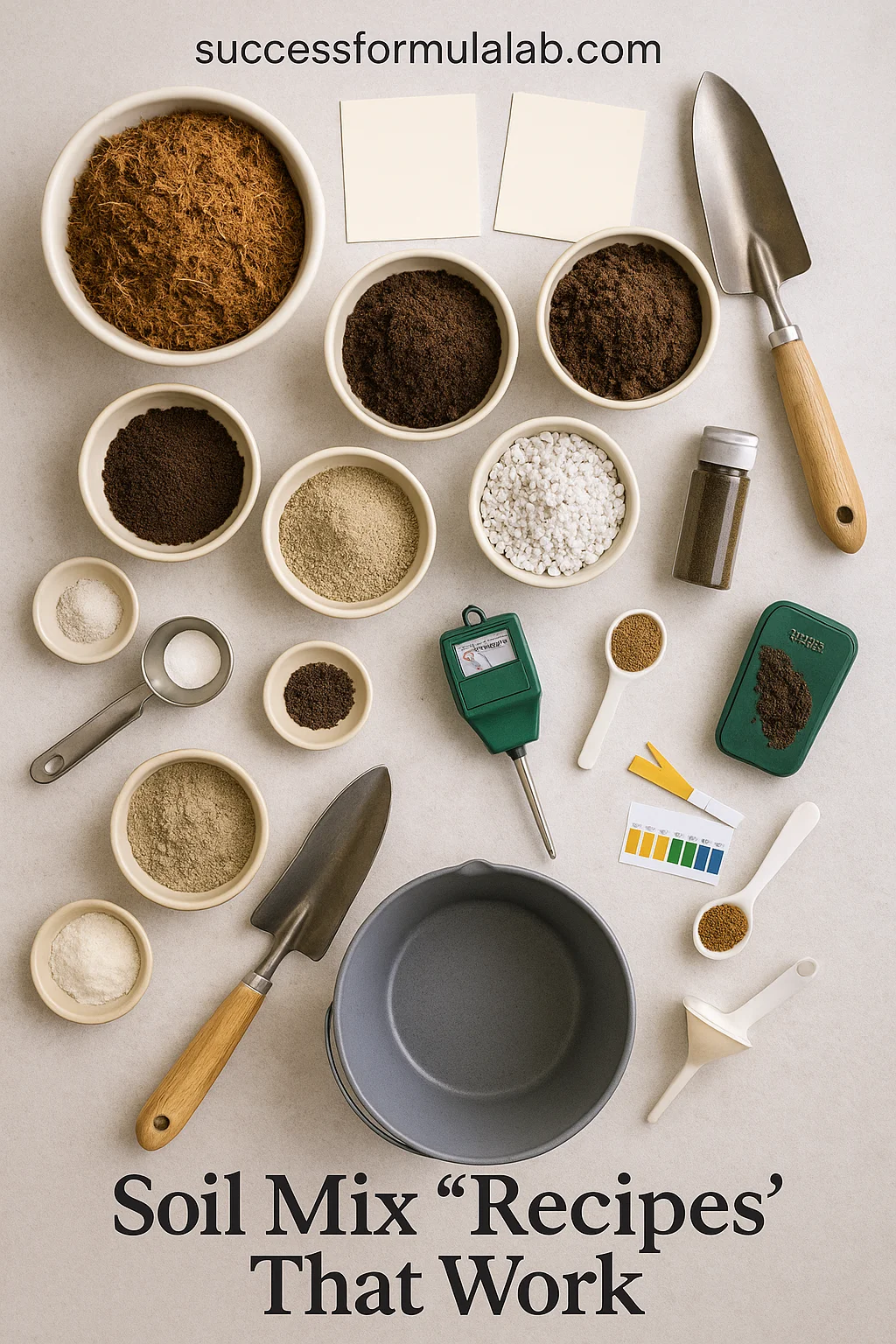
Standard peat-free mix (by volume)
-
45% screened compost
-
35% coco coir (hydrated; rinsed)
-
15% perlite or pumice
-
5% worm castings
-
+ dolomitic lime to pH 6.0–6.8
-
+ slow-release organic fertilizer (balanced NPK) per label
SIP-optimized mix (for self-watering planters)
-
55% quality potting soil (peat-free)
-
25% fine bark (adds structure & wicking)
-
15% perlite
-
5% compost
-
+ slow-release fertilizer
Soil “recipes” at a glance
| Mix | Base | Aeration | Nutrition | Amendments |
|---|---|---|---|---|
| Standard | Compost + coir | Perlite 15% | Worm castings 5% | Lime to pH 6.0–6.8 |
| SIP | Potting soil + fine bark | Perlite 15% | Compost 5% | Slow-release fert |
Moisture test: Pre-wet mix until it clumps when squeezed but doesn’t drip. Dry media repels water and causes uneven growth.
Timing & Climate (Cool-Season Wins)
Broccoli thrives at 60–70°F (15–21°C) days and 50–60°F (10–16°C) nights. Heat spikes above ~80°F (27°C) can loosen heads or trigger bolting.
-
Spring crop: start seeds 4–6 weeks before last frost; transplant 2–3 weeks before last frost after hardening off.
-
Fall crop: start 8–10 weeks before first frost; fall heads are often sweeter.
Hot balcony? Aim for spring and fall windows, use 30% shade cloth on blazing afternoons, and consider SIP planters to buffer moisture.
Step-by-Step: How to Grow Broccoli in Containers
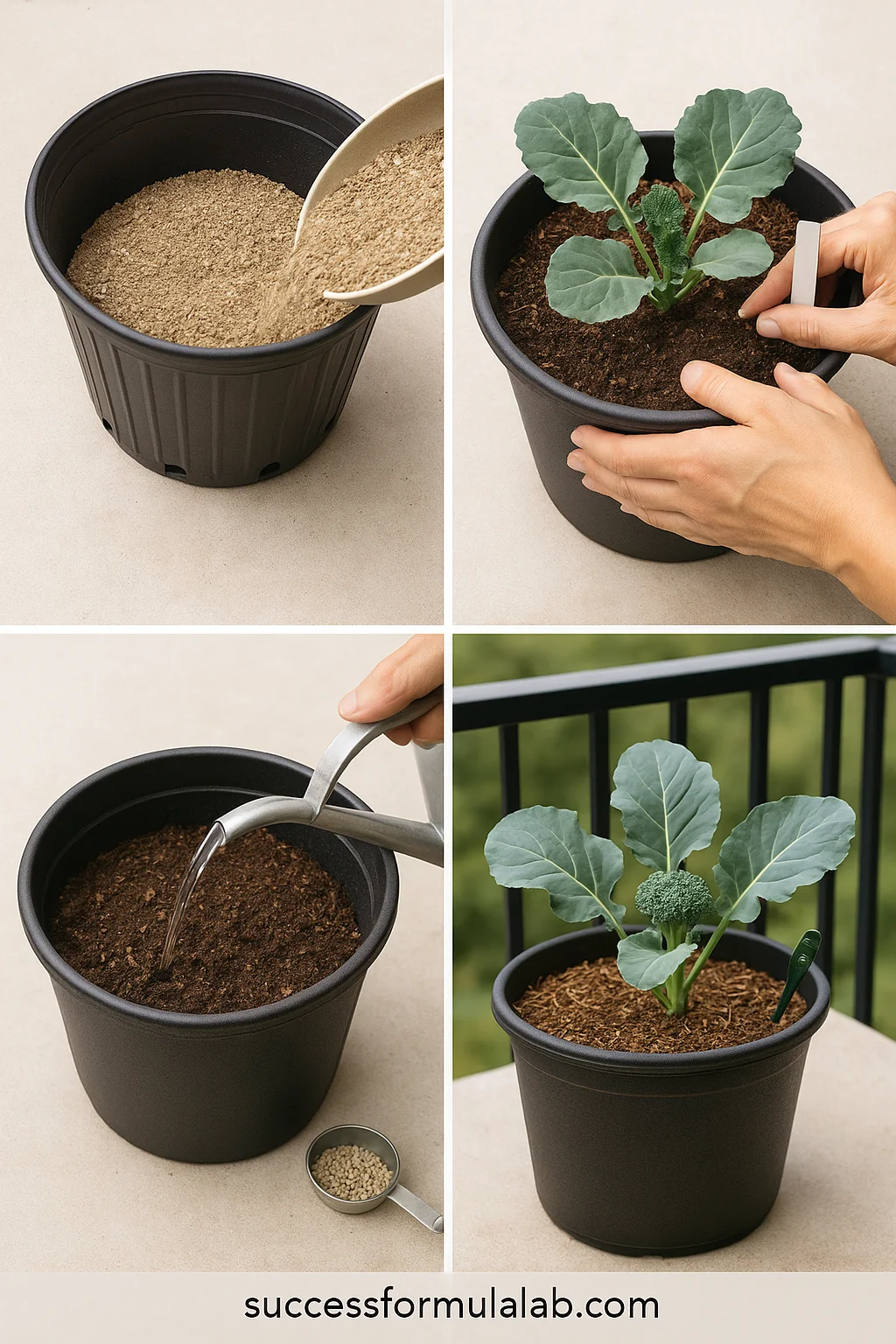
1) Prep the pot
-
Wash and rinse the container; ensure big, clear drainage holes.
-
Optional: a shard or coarse bark layer over holes (don’t block flow).
-
Fill with pre-moistened soil mix; blend in slow-release fertilizer.
2) Transplant like a pro
-
Use sturdy 4–6-week-old starts with thick stems and no flowers.
-
Plant deeper, up to the first true leaves; firm gently.
-
Water to settle; add 1–2 in (2.5–5 cm) of mulch (straw/fine bark).
3) Place for sun & airflow
-
Full sun 6–8 hours. In hot zones, morning sun + afternoon shade is gold.
-
Rotate the pot weekly for even head development and airflow.
4) Watering rhythm
-
Keep soil evenly moist, never waterlogged.
-
Finger test: 1–2 in down—if dry, water.
-
Morning deep soak beats evening splash; SIP users, keep the reservoir topped.
5) Feeding schedule (heavy feeder!)
-
Weeks 1–4: weekly N-forward liquid (e.g., fish/kelp 5-1-1).
-
Weeks 5–8: switch to a balanced 4-4-4 every 10–14 days.
-
Soft water? Add a light Ca/Mg supplement to prevent tip burn.
6) Support & spacing
-
Stake in windy sites. Keep pots from leaf-touching to reduce disease pressure.
7) Pest prevention from day one
-
Cover plants with floating row cover after transplanting (clips and all).
-
Inspect undersides of leaves twice a week for chew marks or frass.
8) Harvest for side-shoot gold
-
Cut the central head when the surface is bumpy-tight and 10–20 cm across—before you see yellow petals.
-
Leave the plant—side shoots will follow for weeks with light feeding.
Watering & Moisture Management (Consistency = Tight Heads)
Containers dry faster than beds, so your schedule matters.
Watering guide by weather
| Conditions | Frequency | Method |
|---|---|---|
| Cool (50–60°F / 10–16°C) | Every 2–3 days | Top-water to slight runoff; drain fully |
| Mild (60–75°F / 15–24°C) | Daily or refill SIP | Morning deep soak; mulch helps |
| Hot (75–85°F+ / 24–29°C) | Daily; SIP critical | Add 30% shade cloth; avoid midday splash |
Under-watered signs: midday flop, small heads, bitterness.
Over-watered signs: yellowing, edema blisters, slow growth.
Fertility & pH (Feed Early, Balance Later)
Broccoli needs fuel. Focus on leaf and root mass first, then balanced nutrition for tight domes.
Feeding “recipe” (per 5–7 gal pot)
| Week | Product | Rate | Notes |
|---|---|---|---|
| 1–4 | Fish/kelp 5-1-1 | per label | Push vegetative growth |
| 5–8 | Balanced 4-4-4 | per label | Support heading |
| Ongoing | Chelated Ca/Mg | light | Prevent tip burn in soft water |
Keep pH between 6.0–6.8. If leaves pale despite feeding, test pH before adding more fertilizer—nutrients can be present but locked out.
Pests & Diseases (Simple, Clean IPM)
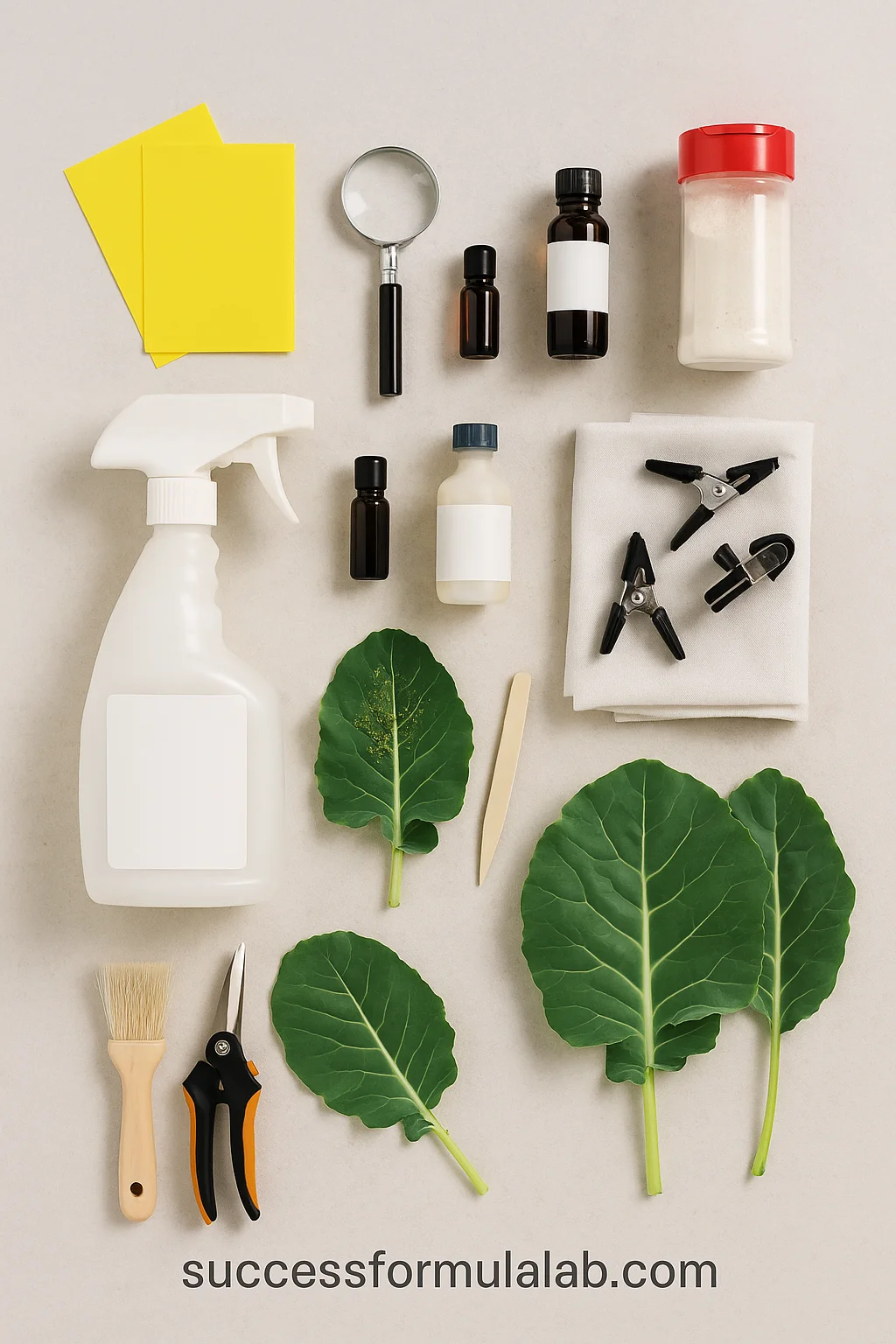
Usual suspects & fast wins
-
Cabbage worms/loopers (green caterpillars): keep row cover on; if you see chew marks or frass pellets, apply Bt (Bacillus thuringiensis kurstaki) at dusk and hand-pick.
-
Aphids: blast with water; use insecticidal soap on undersides; reduce crowding and drought stress.
-
Flea beetles: row cover + sticky cards; neem on non-blooming plants if pressure is high.
Disease prevention
-
Clubroot: never use garden soil in pots; sanitize between seasons; keep pH ~6.8.
-
Downy mildew/black rot: maximize airflow; water in the morning; avoid leaf-wetting late in the day.
Row cover tip: Leave it on until harvest day if pests are intense in your area; lift only to feed and weed.
Harvest, Storage & Yield
Readiness cues
-
Buds tight and small; no yellow petals.
-
Cool morning harvest = crisper heads and longer storage.
-
Take 6–8 in (15–20 cm) of stem to encourage side shoots.
Aftercare for side shoots
-
Continue steady watering and a lighter feed every 2–3 weeks.
-
Pick shoots frequently to keep new flushes coming.
Storage options
-
Refrigerate unwashed in a perforated bag for 3–5 days.
-
Blanch florets 2–3 minutes, chill, drain, freeze on a tray, then bag.
Troubleshooting (Fast Fixes That Work)
| Symptom | Likely Cause | What You Do |
|---|---|---|
| Loose, leafy head | Heat >80°F; low sun | Plant earlier/later; add 30% shade; ensure 6–8 hrs sun |
| Buttoning (tiny head) | Transplant shock; low N; dry spells | Harden off; steady N first month; even moisture |
| Yellowing leaves | Overwatering or N deficiency | Let pot breathe/drain; resume balanced feeding |
| Tip burn/brown edges | Ca issue or moisture swings | Light Ca/Mg; steady water; mulch; avoid drought flushes |
| Shot-hole leaves | Flea beetles | Row cover; sticky cards; neem on non-blooming plants |
| Ragged chewing | Cabbage worms/loopers | Bt at dusk; hand-pick; keep cover on |
Microclimate Hacks (Balcony & Patio Wins)
-
Heat sink trick: Park pots near a bright wall for spring/fall warmth; move away in heat waves.
-
Wind breaks: Clear vinyl panels or lattice tame balcony gusts without stealing light.
-
Reflectors: Pale paving or a light-colored wall bounces extra light to lower leaves.
-
Water buffer: Pair broccoli with SIP planters or group pots closely to reduce evaporation.
Starter Shopping List (One 7-Gallon Pot)
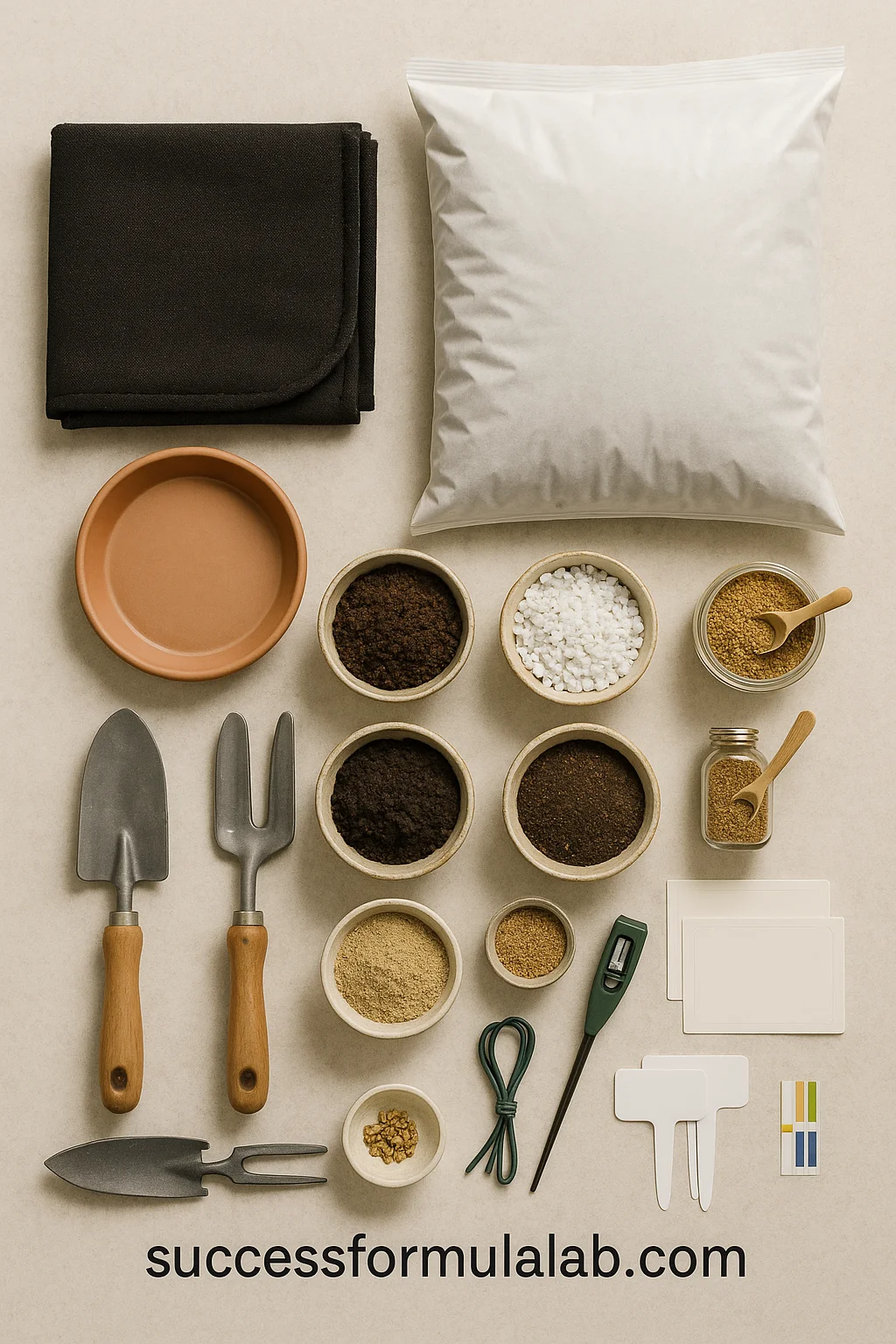
-
7-gal fabric pot (+ feet/risers)
-
Potting components for the standard mix (compost, coir, perlite, worm castings, lime)
-
Slow-release organic fertilizer + fish/kelp liquid
-
Mulch (fine bark or straw)
-
Floating row cover + clips, Bt, insecticidal soap
-
Transplant (4–6 weeks old) or seed + seed tray
-
pH test strips (optional but helpful)
Printables You Can Use
Soil mix recipe (per 10 L)
| Ingredient | Amount |
|---|---|
| Screened compost | 4.5 L |
| Coco coir (hydrated) | 3.5 L |
| Perlite/pumice | 1.5 L |
| Worm castings | 0.5 L |
| Dolomitic lime | per label (target pH 6.0–6.8) |
| Slow-release organic fert | per label |
Feeding calendar (8 weeks from transplant)
| Week | What You Add | Why |
|---|---|---|
| 1 | Fish/kelp (5-1-1) | Kickstart vegetative growth |
| 2 | Fish/kelp | Maintain leaf/roots |
| 3 | Fish/kelp | Consistency prevents stress |
| 4 | Fish/kelp | Final N-forward boost |
| 5 | Balanced 4-4-4 | Shift to head formation |
| 6 | Balanced 4-4-4 | Maintain heading |
| 7 | Balanced 4-4-4 | Even, tight domes |
| 8 | Balanced 4-4-4 | Finish strong |
FAQs — How to Grow Broccoli in Containers
What size pot is best for how to grow broccoli in containers?
A single plant needs 5–7 gallons minimum. In hot or windy sites, 10–12 gallons stabilizes moisture and reduces stress.
Can you grow broccoli on a sunny, hot balcony?
Yes—target spring/fall, add 30% shade cloth in heat, and use a self-watering planter to buffer moisture. Morning sun + afternoon shade is ideal.
What soil is best for how to grow broccoli in containers?
A light, peat-free mix with compost for nutrition and perlite/pumice for drainage. Keep pH 6.0–6.8.
How often do you feed broccoli in pots?
Weekly N-forward feeds for the first month, then a balanced fertilizer every 10–14 days through heading. Keep moisture steady for uptake.
How long until harvest?
Usually 55–80 days from transplant, depending on variety, temperature, and day length.
How do you stop worms eating the leaves?
Keep row cover on from day one. If you see chew marks or green frass, use Bt at dusk and hand-pick larvae.
Will broccoli regrow after the main head is cut?
Yes—most varieties produce side shoots for weeks. Keep watering and give light, balanced feeds.
Ready to turn your balcony into a steady food corner?
See simple small-space layouts in The Self-Sufficient Backyard →
Recommended Resources
- The Self-Sufficient Backyard — container-friendly garden plans, tight-space food/water systems, and harvest calendars you can adapt to a balcony.
- The AquaTower — compact self-watering/irrigation approach to keep pots evenly moist during heat waves.
Crisp Heads, Small Space
When you match container size to roots, soil mix to drainage, and feed/water on a rhythm, you master how to grow broccoli in containers —and your patio becomes a cool-season powerhouse. Start with one 7-gallon fabric pot, follow the feeding calendar for eight weeks, and harvest your first tight, sweet head right where you drink your morning coffee. Keep the plant for side shoots, and you’ll enjoy a steady trickle of florets long after the main crown is gone.

